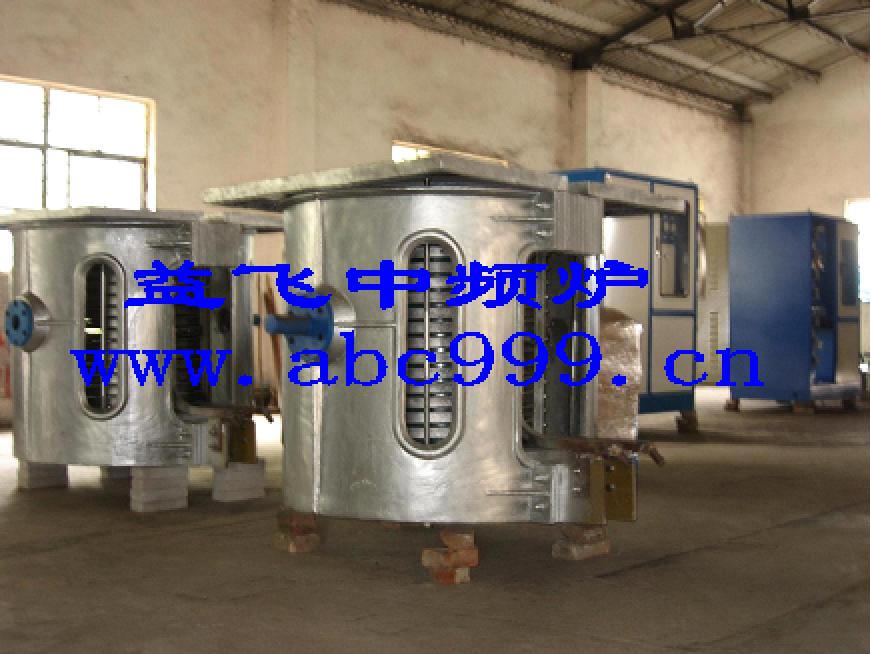A method of making induction melting furnace lining
The high temperature function of the induction smelting furnace lining mainly depends on the physical and chemical functions and mineral composition of the refractory materials used. On the premise of the selection of the original and auxiliary materials, the sintering process is the key process to make the furnace lining obtain superior microstructure structure to fully develop its high temperature resistance function. The densification level of lining sintering is related to the chemical composition, particle size ratio, sintering process and sintering temperature of refractory materials. Furnace building process
1. Remove the mica paper when building the furnace.
2. The crystal quartz sand for furnace building shall be disposed as follows:
3. Manual selection: firstly remove lumps and other impurities;
4. Magnetic separation: magnetic impurities must be completely removed;
5. Dry ramming material: it must be dried slowly at a temperature of 200 ℃ - 300 ℃ for more than 4 hours.
6. Selection of binder: boric anhydride (B2O3) is used as the binder instead of boric acid (H3BO3), with the participation of 1.1% - 1.5%.
7. Selection and proportion of furnace building data:
8. Selection of furnace building data: It should be noted that not all quartz sand can be used as the lining data of induction furnace. The main thing is that the coarser the quartz crystal is, the less the lattice defects are, the better. (For example, crystal quartz sand has high SiO2 purity, white and bright surface.) The larger the furnace capacity is, the higher the requirements for grains are.
9. Proportion: proportion of quartz sand for furnace lining: 6-8 mesh 10% - 15%, 10-20 mesh 25% - 30%, 20-40 mesh 25% - 30%, 270 mesh 25% - 30%.
10. Knotting of induction smelting furnace lining: the quality of furnace lining knotting is directly related to the sintering quality. When knotting, the sand particle size distribution will not occur segregation on average. The density of the knotted sand layer is high, and the probability of cracks after sintering is reduced, which is conducive to improving the service life of the induction furnace lining.
11. Knotting furnace bottom: the furnace bottom is about 280mm thick, and it is filled with sand four times. When Chengdu hires a car for manual knotting, uneven density of the ground shall be avoided, and the furnace lining after baking and sintering is not dense. Therefore, it is necessary to control the feeding thickness. The thickness of ordinary sand filling is not more than 100mm/time, and the furnace wall is controlled within 60mm. Many people work in shifts, 4-6 people in each shift, 30 minutes for each knotting, and rotate around the furnace slowly and evenly to avoid uneven density.
12. Knotting furnace wall: the thickness of furnace lining is 110-120mm. Dry knotting materials are used in batches. The distribution is average. The thickness of filler is not more than 60 mm. Knotting takes 15 minutes (manual knotting) until it is flush with the upper edge of the induction ring. After knotting, the crucible mould will not be taken out, and induction heating will be applied during drying and sintering.
13. Baking and sintering standards: In order to obtain the three-layer structure of the furnace lining, the baking and sintering process can be roughly divided into three stages:
14. Baking stage: heat the crucible mold to 600 ℃ at the speed of 25 ℃/h and 50 ℃/h for 4h, with the goal of thoroughly removing the moisture in the furnace lining.
15. Semi sintering stage: temperature rise to 900 ℃ at 50 ℃/h for 3h, temperature rise to 1200 ℃ at 100 ℃/h for 3h, temperature rise rate must be controlled to avoid cracks.
16. Complete sintering stage: during high temperature sintering, the sintering structure of the crucible is the foundation for improving its service life. The sintering temperature is different, the thickness of sintering layer is insufficient, and the service life is obviously reduced.
Yiphee Electric Furnace Co.,Ltd specializes in producing induction furnace.Tel(WhatsApp):+86-13450756789, yiphee@yiphee.cn
